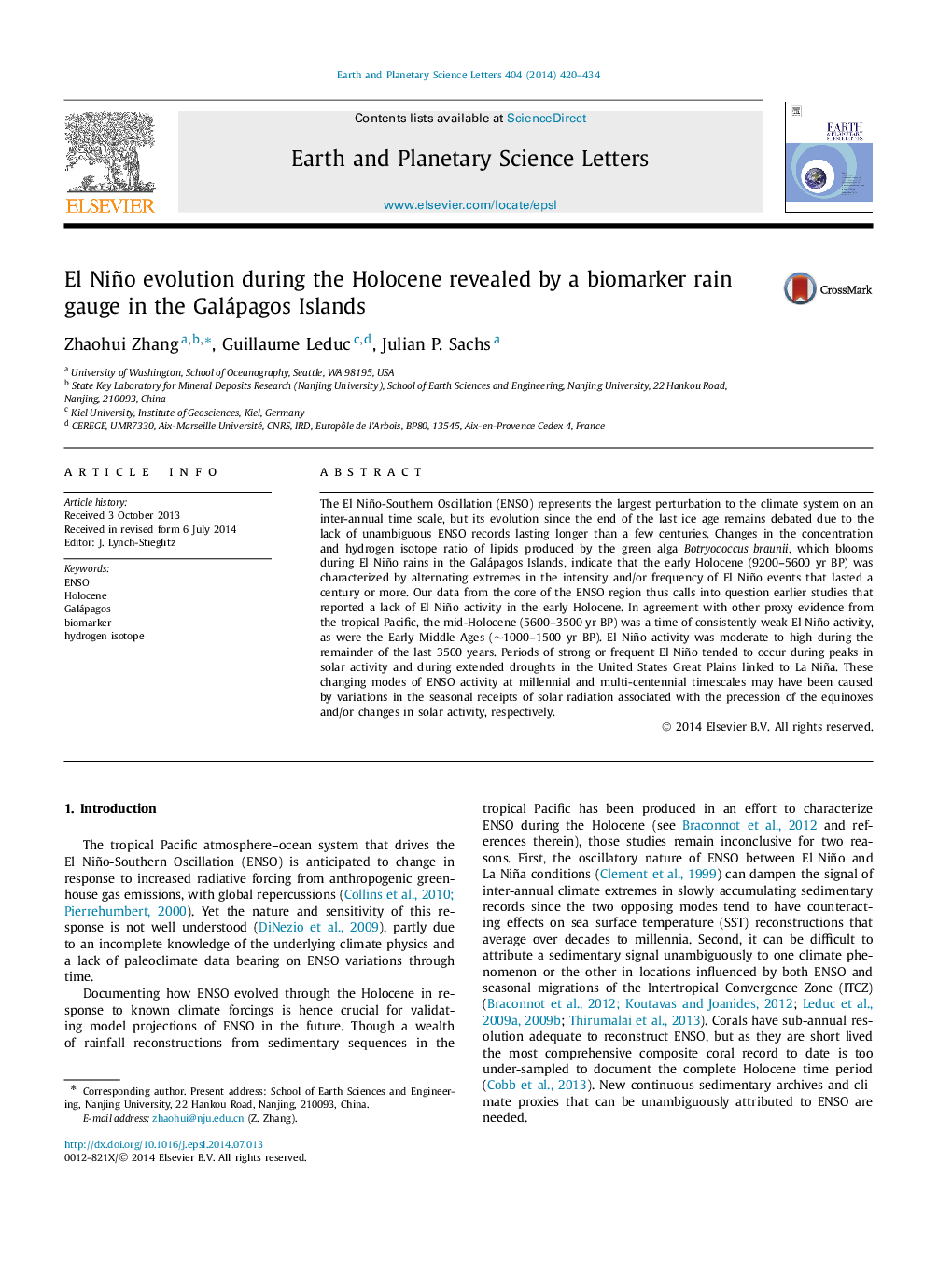| کد مقاله | کد نشریه | سال انتشار | مقاله انگلیسی | نسخه تمام متن |
|---|---|---|---|---|
| 6429074 | 1634752 | 2014 | 15 صفحه PDF | دانلود رایگان |

- Changes in El Junco log (bot) and biomarker δD reveal the evolution of El Niño.
- Alternating extremes in El Niño events characterize the early Holocene.
- Our data refute earlier studies on lack of El Niño activity in the early Holocene.
- El Niño and La Niña events are coupled in the Holocene.
- Intensification of both ENSO phases broadly coincided with peaks in solar activity.
The El Niño-Southern Oscillation (ENSO) represents the largest perturbation to the climate system on an inter-annual time scale, but its evolution since the end of the last ice age remains debated due to the lack of unambiguous ENSO records lasting longer than a few centuries. Changes in the concentration and hydrogen isotope ratio of lipids produced by the green alga Botryococcus braunii, which blooms during El Niño rains in the Galápagos Islands, indicate that the early Holocene (9200-5600 yr BP) was characterized by alternating extremes in the intensity and/or frequency of El Niño events that lasted a century or more. Our data from the core of the ENSO region thus calls into question earlier studies that reported a lack of El Niño activity in the early Holocene. In agreement with other proxy evidence from the tropical Pacific, the mid-Holocene (5600-3500 yr BP) was a time of consistently weak El Niño activity, as were the Early Middle Ages (â¼1000-1500 yr BP). El Niño activity was moderate to high during the remainder of the last 3500 years. Periods of strong or frequent El Niño tended to occur during peaks in solar activity and during extended droughts in the United States Great Plains linked to La Niña. These changing modes of ENSO activity at millennial and multi-centennial timescales may have been caused by variations in the seasonal receipts of solar radiation associated with the precession of the equinoxes and/or changes in solar activity, respectively.
Journal: Earth and Planetary Science Letters - Volume 404, 15 October 2014, Pages 420-434